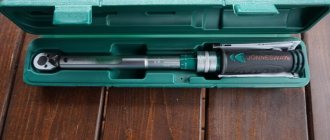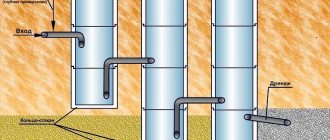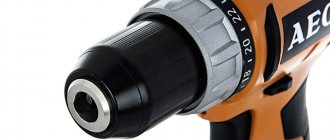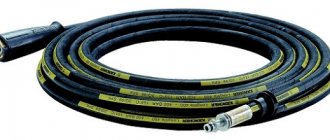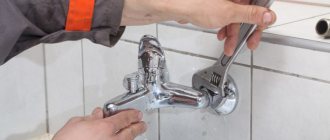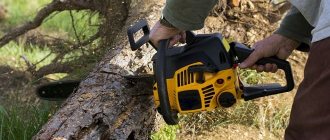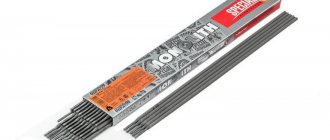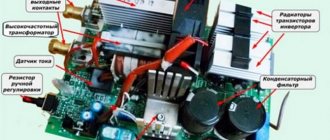To ensure the correct tightening torques for bolts and nuts, a tool that accurately meters the force is required.
In order not to attach an external dynamometer to the handle, a rather convenient device is available: a torque wrench. However, many car enthusiasts do not know how to use it: especially if the tool is equipped with an adjustable force regulator instead of a measuring scale.
Despite the uniform principle of using a torque wrench: providing a given force when tightening fasteners, the operating technology in different models is fundamentally different.
Design and principle of operation of a torque wrench
First, let's look at units of measurement. Torque is measured in newtons per meter (Nm or Nm). To use this value in practice, it is enough to remember a simple definition from a school physics course: 10 N.m. means a force of 1 kg applied to a lever 1 meter long.
Any scale on a torque wrench is marked exactly according to this principle.
Let's look at different tool designs.
This is the most inexpensive option, convenient and easy to use. On the handle there is a scale marking the torque value.
Two rods are attached to the square tip (for installing socket heads): a lever and an arrow. When tightening the fastener, the handle bends at a calibrated angle.
As a result, the scale shifts relative to the fixed pointer. The mechanic records the required value in newtons per meter and stops tightening at the right moment.
The advantage is low cost and the ability to control the result in “real time”. There are also disadvantages:
- fairly high error - up to 8%;
- The quality of work greatly depends on the firmness of the operator’s hands. High probability of overtightening the nut.
Nevertheless, it is possible to work with such a tool, and it is quite often found in the garages of car enthusiasts.
Indicator type
The operating principle is the same as that of a switch, but the display of the result is more accurate. The head has a rotating mechanism with a spiral spring. A pointer instrument with a scale marked in Nm is mechanically attached to it.
By turning the lever, the mechanic creates a force that deflects the rotating mechanism. The torque is displayed by a dial indicator. It is convenient to use such a torque wrench only in an open space - when the indicator is visually controlled.
If you need to tighten fasteners in a hidden cavity, it is better to choose a tool with an arrow lock. After removing the load, the indicator saves the readings, then the arrow is reset to zero using the button.
Tightening occurs in stages: with a gradual increase in force. The error of such a torque wrench usually does not exceed 6%.
Electronic indicator
At first glance, the technology is the same as that of a pointer tool. A spring mechanism in the head records the torque, which is displayed on the electronic display.
The simplest examples work this way. But if you want to use a torque wrench as efficiently as possible, it is better to purchase a kit with additional functions.
What options can be on the electronic scoreboard?
- selection of units of measurement (N.m., Kg/cm, Kg/m, etc.);
- fixation of the maximum result (reset with a button);
- sound indication.
Let's take a closer look at the last parameter: You set the response limit in advance. When the set torque value is reached, a buzzer sounds. A tool with this option is convenient to use when access is limited, when work is actually done “by touch.”
The error is about 5% -6%, with visual control of the result, the tightening accuracy still depends on the firmness of the hand.
The tool only shows the force applied to the handle. There are no restrictions on tightening, so careless handling can damage the serviced unit. When working with critical fasteners (cylinder heads, intake and exhaust manifolds, timing mechanisms), you must be extremely careful.
Click mechanism
This device resembles an ordinary ratchet for socket heads. The external difference is a thicker handle with marked scale divisions.
This is a classic of the genre - used both in car repair shops and in personal garages. You can use a torque wrench with a click mechanism without fear of damaging the fastener or the part being installed.
When the set torque value is reached, the limiter is activated. Tightening the nut (bolt) will not work.
How does the system work? Internal structure in the illustration:
Inside the head there is a directed gear (1) , as in an ordinary ratchet. Instead of a traditional ratchet, a torque wrench uses a locking mechanism (2) . The principle of its operation is not to stop slipping, but to limit the force.
The rotating part of the handle (3) has an installation rod (4) , which is in a spring-loaded state. The spring (5) holds the locking mechanism until the set torque value is exceeded.
After which, the ratchet mechanism of the stopper slips in both directions: it is impossible to apply more than the selected force. The handle rotates around the head, making characteristic clicks.
To make it convenient for mechanics to use a torque wrench, some models provide interchangeable heads for different square sizes. However, experienced professionals do not recommend them. The additional connection gives a slight backlash, reducing the accuracy of the tool.
The main advantage of the click mechanism is the relatively low error in setting the torque force. Even in the cheapest models, the figure does not exceed 4%. It can be used almost blindly; when the set value is reached, you will hear clicks.
The indicator instrument should be handled carefully: only hold it by the handle outside the scale, and do not twist the head. Click ratchets forgive any mistakes: you can work with both hands, even at an angle to the bolt.
Disadvantages of the ratchet-click system: Measurement (more correctly, limitation) of the tightening torque occurs discretely. Continuous setting of the value is not possible. A characteristic feature is that the wider the scale range, the larger (coarser) the step.
That is, in order to use a click-type torque wrench more accurately, you need to purchase several copies of the tool: for different ranges.
How to use a torque wrench - instructions with examples
- ➡️ Rules for using a torque wrench: ➡️ Snap type: how to use the wrench and scale
- ➡️ Torsion bar type with pointer arrow
- ➡️ Electronic key
- ➡️ With horn attachments
- ➡️ Instructions for using torque wrenches
A torque wrench is a special tool, a device that is used to tighten the bolts and nuts of various components and mechanisms with the required torque. This force is measured in Newton meters (Nm).
To ensure reliable, accurate and trouble-free operation, most modern mechanisms must be assembled with maximum precision. Deviation of the dosed tightening force can negatively affect both the quality of operation of the unit or mechanism and its service life.
Good afternoon everyone. In general, there is a subject, Force 5-25nm (adjustable with a knob in the handle), but as it turned out, it turns but is not adjustable at all - I couldn’t turn it with any effort at any values. Can this be repaired in our city or will we have to use it as a 1/4 ratchet?
You unscrew the lock on the handle, use the handle to set the desired torque on the scale, and tighten the lock
Is there such a thing? Maybe you're doing something wrong?
If you're afraid, don't do it, if you did it, don't be afraid.
That's right, that's what I do. There is no result.
So is there a click or not? You pull until it clicks, it clicks, then wind the coins. Why are you going to pull it off?
If you're afraid, don't do it, if you did it, don't be afraid.
There’s this situation: in one direction, regardless of the set force, it scrolls with ease like a banal “ratchet”, in the other, on the contrary, you can’t force it to click even at the minimum setting.
buy a 32 Nm Dino Umbro from me))) it’s in the case like new, it clicks as it should))
By the way, the first time I used this key, the bolt on the head also went to hell, because the lever there is stupid and it clicks when the new one is finally not clear)))
)), after 3 years of lying around in the garage, today it dawned on me where it should click - it turns out it works
If you're afraid, don't do it, if you did it, don't be afraid.
What, I won’t sell my Dino to anyone again?(((
I think so, if you decide to do something, you should do it. Take the pipe, increase the lever and turn it on the dead bolt. You can tighten the square in a vice and twist it as hard as you can. And yes, be careful not to break the vice))))))
If you're afraid, don't do it, if you did it, don't be afraid.
Fpiryot minya nada ftem to interfere bulo)))
If you're afraid, don't do it, if you did it, don't be afraid.
So, maybe it will be sold on Avita if the price is negligible
Practical application: how to use the tool correctly
Indicator devices do not cause any difficulties. You just read the readings and see the torque. But the click mechanism requires getting used to and correct understanding of the scale markings. Rough readings are marked on the fixed shaft of the handle. Precise divisions on the turning part.
The illustration shows marks at 98 Nm and 2 Nm (on the rotary handle). The values are added up: the final value is 100 Nm. To tighten the car wheel bolts with such a torque wrench (for example, a value of 120 Nm), you need to set 112 Nm on the fixed handle and 8 Nm on the rotating part.
If you understand the general principle, using the tool will be convenient.
There are various marking options:
In this case, for all types of handles there is a general rule: the locking wheel is unscrewed at the end, the value is set, after which the mechanism is tightened again. Most torque wrenches of this type are even simpler.
DIY making
A homemade torque wrench is based on the laws of physics that are taught in school. The applied force is expressed in Newtons per meter, and the degree of force can be adjusted depending on the length of the lever. It is worth considering that to create a certain force, different lever lengths are required in different cases. The main condition is that this indicator must be measured.
Among the features of creating this type of tool with your own hands, we note:
- A dynamometer is often used to measure the force applied. A homemade instrument can be created using a regular spring scale with a dial and hook. It is recommended to choose a model with a round school, as they are more accurate.
- In most cases, a pipe with a length of 0.5 meters and a diameter of 2.5 cm is selected as a lever.
- At the opposite end of the lever used, two holes are created that will be required to install an improvised dynamometer.
A similar design can be used to generate a torque of about 100 N/m. If necessary, you can adjust the key, for which a slightly different pipe is used. The advantage is that it can be used universally , the disadvantage is that it is quite large in size, which does not allow you to comfortably perform work in hard-to-reach places, for example, under the hood.
Universal Bolt Torque Chart
The dependence is indicated not only on the diameter and thread pitch. One of the important characteristics is the strength class. This limitation is associated with the so-called fluidity of the metal, when deformation can lead to failure of at least the thread, and at most the bolt head (stud rod).
It is unacceptable to use this guide when installing components and parts of a car, and especially wheel rims! The tightening torques for fasteners set by the manufacturer are not only related to the strength of the bolts.
The geometry of the part and the tightness of the gasket may suffer. The operating conditions of bearings and seals will change.
